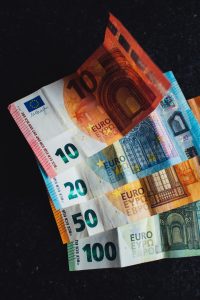The forex market is the largest financial market in the world, with an average daily trading volume of over $5 trillion. With such a huge market, finding liquidity is crucial for traders who want to execute their trades quickly and at the best possible prices. In this article, we will discuss how to find liquidity in forex.
What is Liquidity?
Liquidity refers to the ease with which an asset can be bought or sold without affecting its price. In forex trading, liquidity refers to the ability to buy or sell a currency pair at the current market price. The more liquid a currency pair is, the easier it is to enter or exit a trade.
Why is Liquidity Important in Forex Trading?
Liquidity is important in forex trading because it affects the speed and cost of executing trades. A liquid currency pair has a tight bid-ask spread, which means that the difference between the buying and selling price is small. This makes it easier to enter and exit a trade at the current market price. In contrast, an illiquid currency pair has a wider bid-ask spread, which can result in slippage and higher transaction costs.
How to Find Liquidity in Forex?
1. Trade During High Volume Periods
The forex market is open 24 hours a day, five days a week. However, not all trading sessions are created equal. The highest volume period in the forex market is the overlap between the London and New York sessions. This is when the most liquidity is available, and traders can expect tighter bid-ask spreads and lower transaction costs.
2. Choose the Right Currency Pairs
Not all currency pairs are equally liquid. Major currency pairs, such as EUR/USD, USD/JPY, and GBP/USD, are the most liquid because they are widely traded. In contrast, exotic currency pairs, such as USD/TRY or USD/HKD, are less liquid because they are not as widely traded. When trading forex, it is important to choose currency pairs that are liquid and have tight bid-ask spreads.
3. Use Market Depth
Market depth is a measure of the volume of buy and sell orders at different price levels. It can be used to gauge the liquidity of a currency pair. A currency pair with a deep market depth has a large number of buy and sell orders at different price levels, which means that there is a lot of liquidity available. Traders can use market depth to determine the best entry and exit points for their trades.
4. Use Limit Orders
Limit orders are orders to buy or sell a currency pair at a specific price. They allow traders to enter or exit a trade at a predetermined price, which can help to avoid slippage and reduce transaction costs. When using limit orders, it is important to choose a price that is realistic and within the current bid-ask spread.
5. Use a Reputable Broker
The broker you choose can have a significant impact on the liquidity available to you. A reputable broker will have access to deep liquidity pools and can provide tight bid-ask spreads. In contrast, a less reputable broker may have limited access to liquidity and may offer wider bid-ask spreads. When choosing a broker, it is important to do your research and choose one that has a good reputation and a track record of providing quality services.
Conclusion
In conclusion, finding liquidity in forex is crucial for traders who want to execute their trades quickly and at the best possible prices. Traders can find liquidity by trading during high volume periods, choosing the right currency pairs, using market depth, using limit orders, and using a reputable broker. By following these tips, traders can improve their chances of success in the forex market.






